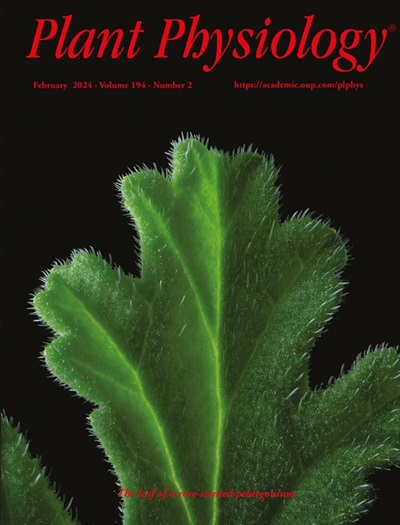The transcription factor GmbZIP131 enhances soybean salt tolerance by regulating flavonoid biosynthesis
IF 6.5
1区 生物学
Q1 PLANT SCIENCES
引用次数: 0
Abstract
Detoxifying reactive oxygen species (ROS) that accumulate under saline conditions is crucial for plant salt tolerance. The Salt Overly Sensitive (SOS) pathway functions upstream, while flavonoids act downstream, in ROS scavenging under salt stress. However, the potential crosstalk between the SOS pathway and flavonoids in regulating salt stress responses and the associated mechanisms remain largely unexplored. To assess this possible connection, we investigated the role of the soybean (Glycine max) transcription factor GmbZIP131 in enhancing salt tolerance by modulating ROS homeostasis through flavonoid biosynthesis. GmSOS2 like (GmSOS2L), a key component of the SOS pathway, phosphorylates and activates GmbZIP131, thus promoting GmICHG (isoflavone conjugate-specific beta-glucosidase) expression. Metabolic profiling of transgenic soybean lines revealed that GmbZIP131 upregulates the levels of lupiwighteone and its 7-glucoside precursor, likely processed by GmICHG. Furthermore, overexpression of GmSOS2L, GmbZIP131, or GmICHG enhances the accumulation of lupiwighteone and its 7-glucoside precursor, as well as soybean salt stress tolerance. Our findings reveal a GmSOS2L–GmbZIP131–GmICHG signaling cascade that enhances soybean salt tolerance through flavonoid accumulation. This research uncovers a mechanism linking the SOS pathway to flavonoid metabolism, offering insights for improving soybean stress tolerance and advancing the molecular breeding of salt-tolerant varieties.求助全文
约1分钟内获得全文
求助全文
来源期刊

Plant Physiology
生物-植物科学
CiteScore
12.20
自引率
5.40%
发文量
535
审稿时长
2.3 months
期刊介绍:
Plant Physiology® is a distinguished and highly respected journal with a rich history dating back to its establishment in 1926. It stands as a leading international publication in the field of plant biology, covering a comprehensive range of topics from the molecular and structural aspects of plant life to systems biology and ecophysiology. Recognized as the most highly cited journal in plant sciences, Plant Physiology® is a testament to its commitment to excellence and the dissemination of groundbreaking research.
As the official publication of the American Society of Plant Biologists, Plant Physiology® upholds rigorous peer-review standards, ensuring that the scientific community receives the highest quality research. The journal releases 12 issues annually, providing a steady stream of new findings and insights to its readership.
 求助内容:
求助内容: 应助结果提醒方式:
应助结果提醒方式:


